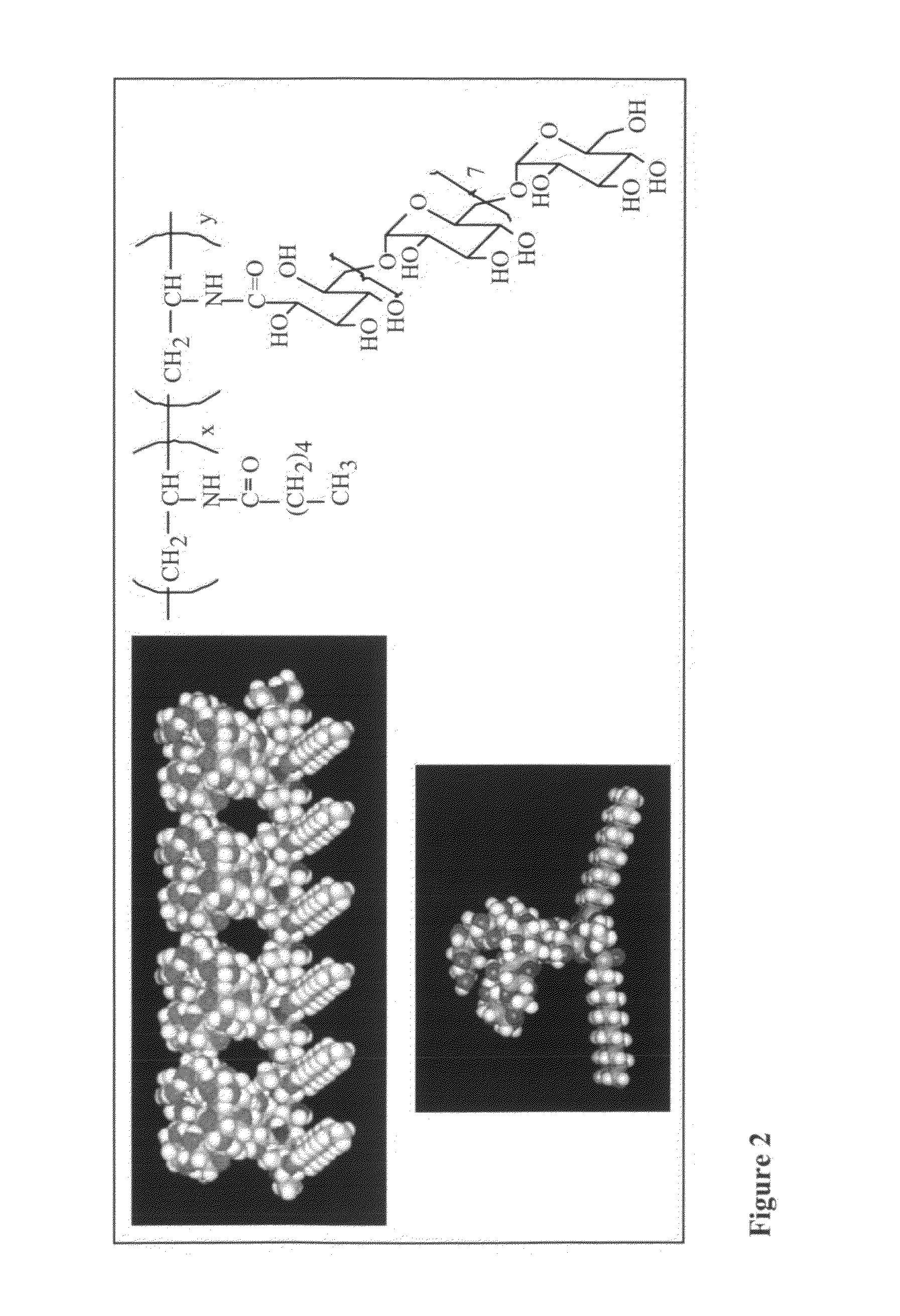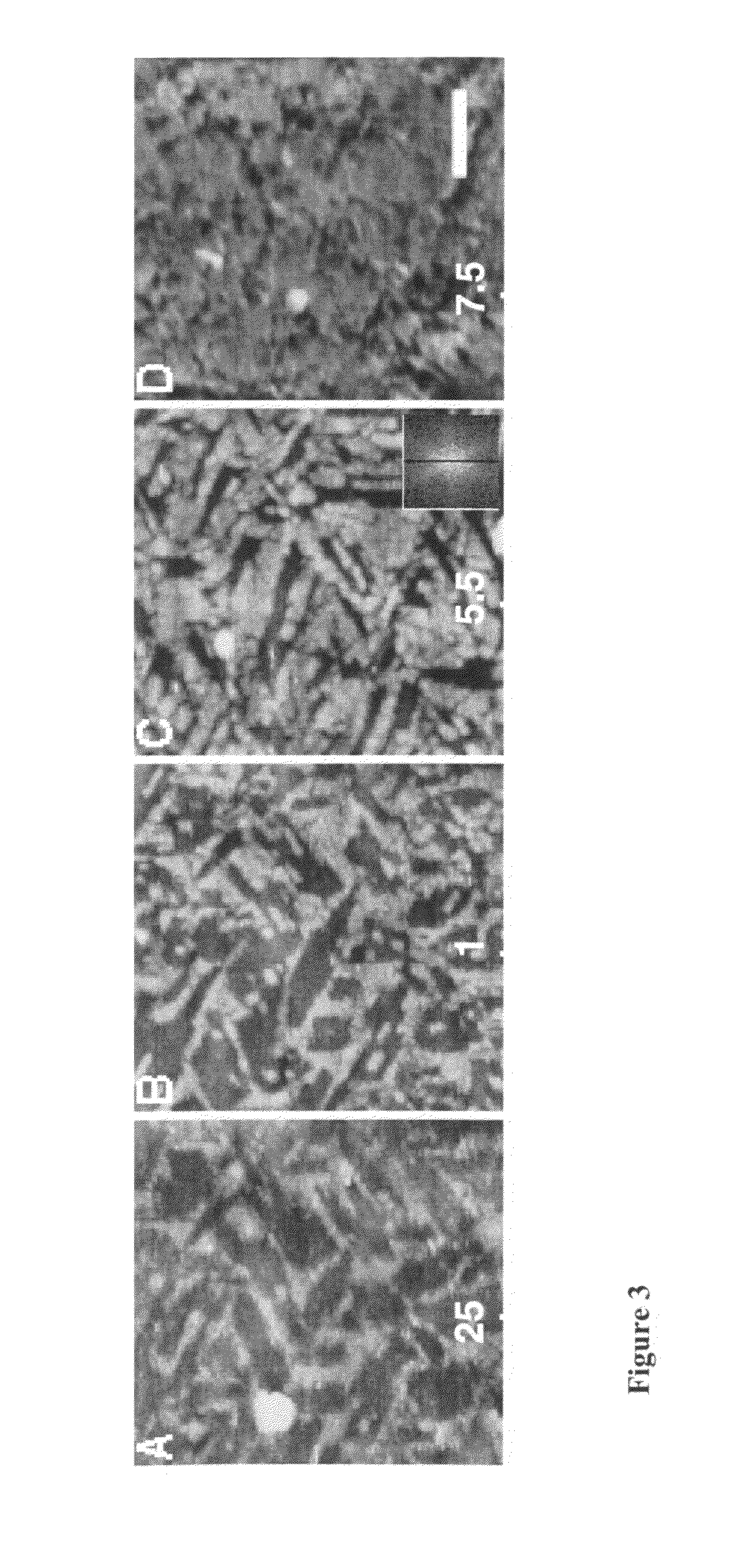Methods of making and using surfactant polymers
a surfactant polymer and polymer technology, applied in the field of comblike surfactant polymers, can solve the problems of not preventing thromboemboli and infection, affecting so as to reduce the encapsulation of medical devices
- Summary
- Abstract
- Description
- Claims
- Application Information
AI Technical Summary
Benefits of technology
Problems solved by technology
Method used
Image
Examples
example 1
Poly (N-vinyl dextran aldonamide-co-N-vinyl hexanoamide)
[0044]A. Materials and Methods
[0045]Acetaldehyde, formamide, formic acid, hexanoic acid N-hydroxy succinimide and dicyclohexylcarbodiimide (DCCI) were purchased from Aldrich Chemical Co. and used as received. Dimethyl formamide (DMF) and dimethyl sulfoxide (DMSO) were purchased from Aldrich Chemical Co. and freshly distilled before use. Strong anionic exchange resin Amberlite IR-400 (Sigma Chemical Co.) was rinsed with distilled water.
[0046]1H-NMR spectra were recorded at temperature, using a 200 MHz Varian Gemini-200 or a 400 MHz Bruker MSL-400 spectrometer, in parts per million downfield from tetramethylsilane (TMS) as internal standard and DMSO-d6 or D2O as solvent. Transmission IR spectra in the range of 400-4000 cm−1 were recorded using a Digilab FTIR spectrometer. The materials were ground with KBr and pressed into pellets under reduced pressure. For each sample, 256 scans were collected with a resolution of 8 cm−1. Gel p...
example 2
Poly (N-vinyl dextran aldonamide-co-N-vinyl hexanoamide) (PNVDA-co-PNVH) (1:3.7)
[0062](PNVDA-co-PNVH) (1:3.7) was prepared as described above in example 1, except the molar feed ratio of dextran lactone to N-hexanoyloxy succinimide was 1:2
example 3
Poly (N-vinyl dextran aldonamide-co-N-vinyl hexanoamide) (PNVDA-co-PNVH) (1:5)
[0063](PNVDA-co-PNVH) (1:5) was prepared as described above in example 1, except the molar feed ratio of dextran lactone to N-hexanoyloxy succinimide was 1:4.
PUM
| Property | Measurement | Unit |
|---|---|---|
| shear stress | aaaaa | aaaaa |
| flow rate | aaaaa | aaaaa |
| temperature | aaaaa | aaaaa |
Abstract
Description
Claims
Application Information
 Login to View More
Login to View More - R&D
- Intellectual Property
- Life Sciences
- Materials
- Tech Scout
- Unparalleled Data Quality
- Higher Quality Content
- 60% Fewer Hallucinations
Browse by: Latest US Patents, China's latest patents, Technical Efficacy Thesaurus, Application Domain, Technology Topic, Popular Technical Reports.
© 2025 PatSnap. All rights reserved.Legal|Privacy policy|Modern Slavery Act Transparency Statement|Sitemap|About US| Contact US: help@patsnap.com



